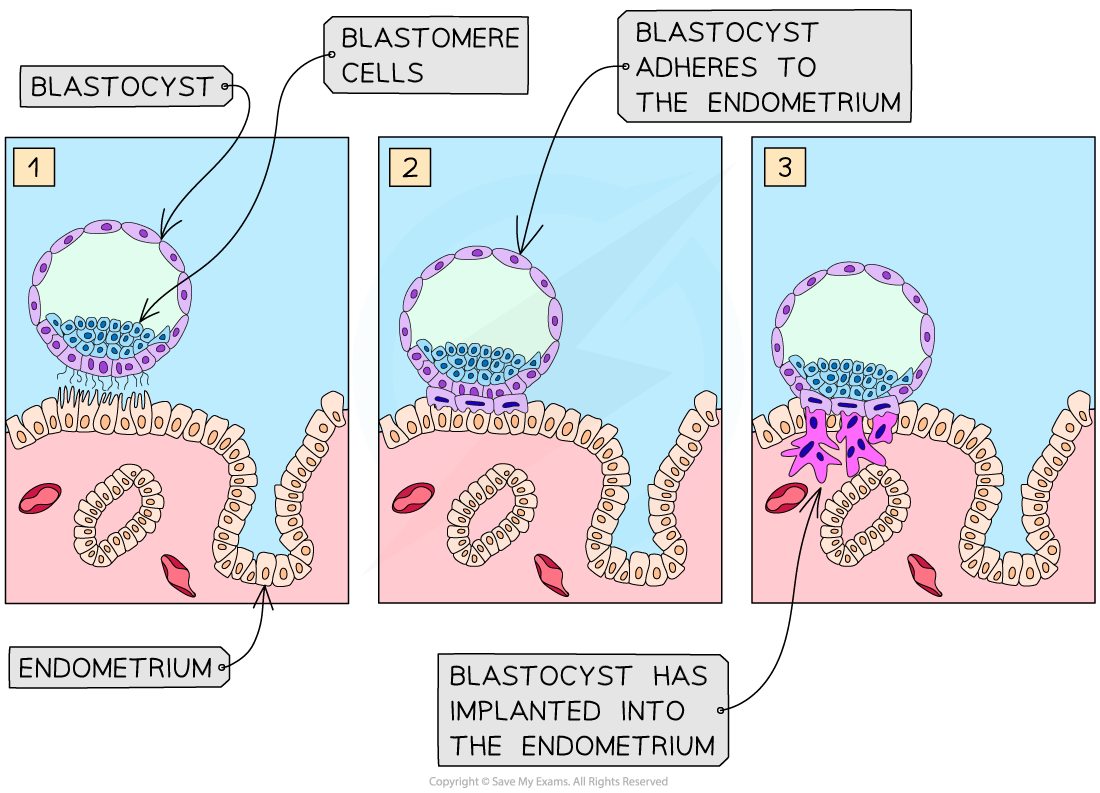Implantation of the Blastocyst
- Following human fertilisation, the newly fertilised ovum divides by mitosis to form two diploid nuclei (i.e. each nucleus contains two sets of chromosomes) and the cytoplasm divides equally to form a two-cell embryo
- Mitosis continues to form a four-cell embryo and this process continues until eventually, the embryo takes the shape of a hollow ball called a blastocyst (with an internal group of cells called blastomeres)
- Blastomeres will eventually develop into the foetus
- The embryo is now referred to as a blastocyst and up until this point is found in the oviduct
- After about seven days it consists of around 125 cells and will have reached the uterus
- During the embryo stage and up until this point the blastocyst is surrounded by a protective extracellular coat called the zona pellucida; at around seven days of age this coat breaks down and is lost
- The blastocyst has used up the nutrient supplies of the egg cell and now needs an external supply of nutrients, which it obtains by implanting into the endometrium (uterus lining)
- The outer layer of the blastocyst develops finger-like projections that allow it to penetrate the endometrium
- At this stage, there is already an exchange of nutrients and oxygen with the mother’s blood
- The embryo continues to grow and develop rapidly after this point

The blastocyst implants into the endometrium of the uterus
Comparing Gestation Between Mammals
- The average human gestation period (the time between conception and birth) is around 38 weeks
- Humans are born relatively helpless, immobile, and unable to obtain their own food
- Species like this are classified as altricial species
- Generally altricial species have shorter gestation periods
- Other species are born in an advanced state; they are able to move around, have good vision and are able to feed themselves almost immediately
- Examples include ducks and horses
- Species like this are classified as precocial
- Mammals with a large body mass are generally precocial and have longer gestation periods
The correlation between animal size and the development of their young at birth
- We can compare gestation periods for mammals with different adult body masses, according to the development of the young at birth (i.e. whether the species is altricial or precocial)
- For both altricial and precocial mammal species, the length of the gestation period is positively correlated with adult body mass
- However, this does not always hold true (some mammal species may have similar gestation periods despite having different body masses)

The relationship between gestation period and adult body mass for mammal species subdivided into whether the species are described as altricial or precocial